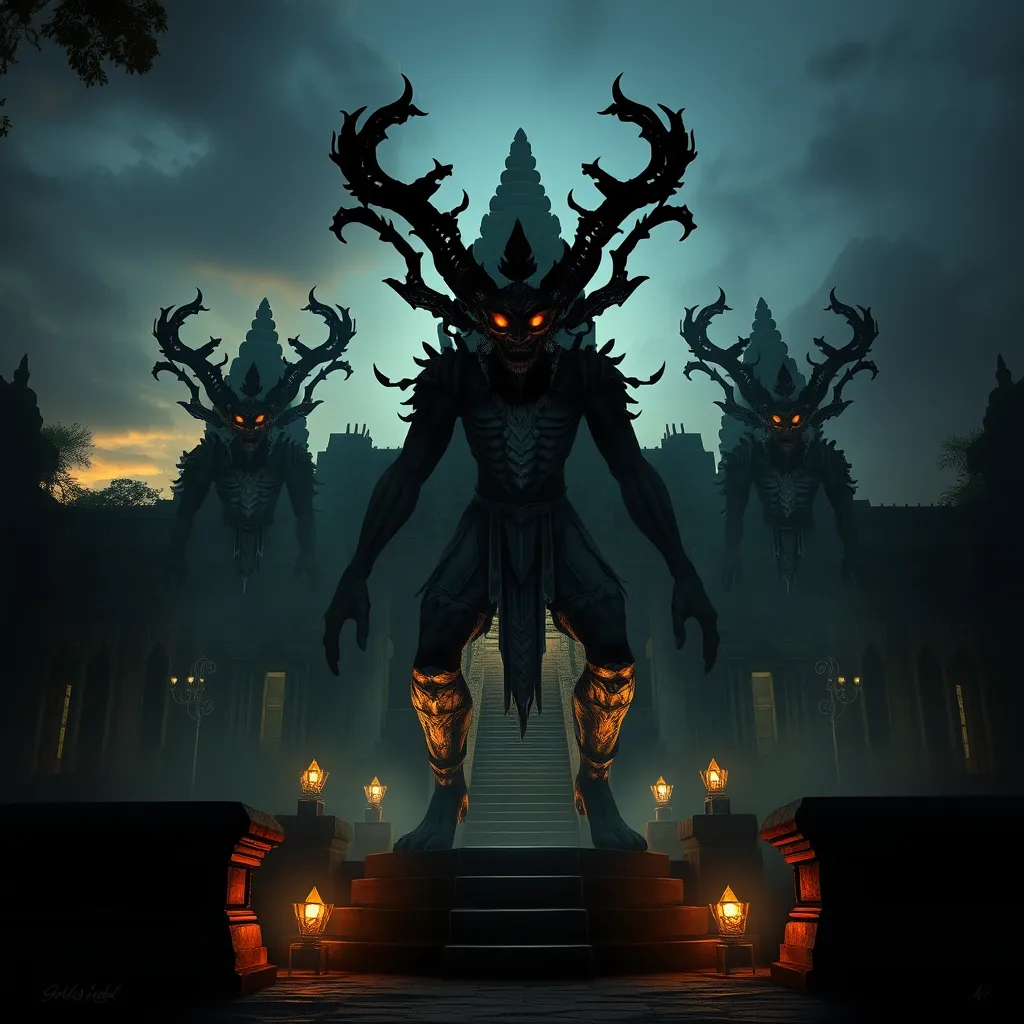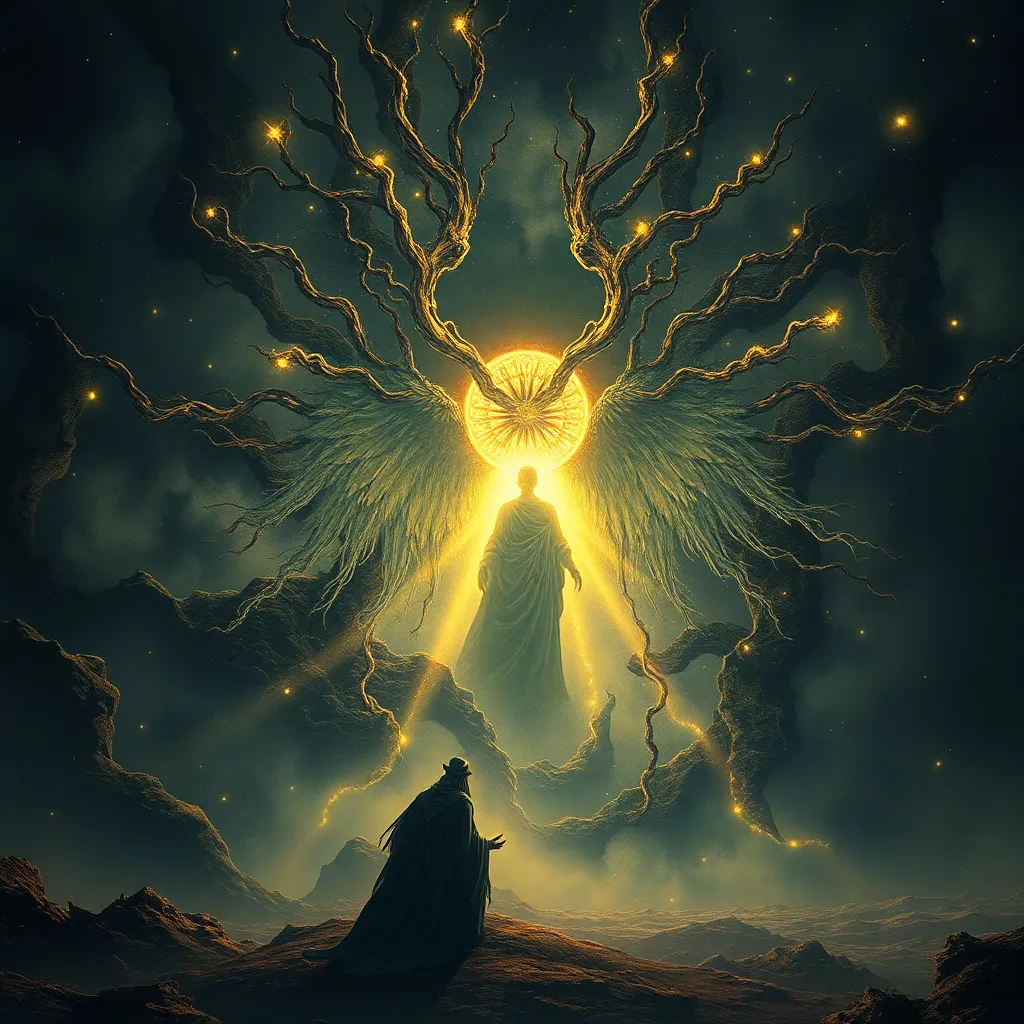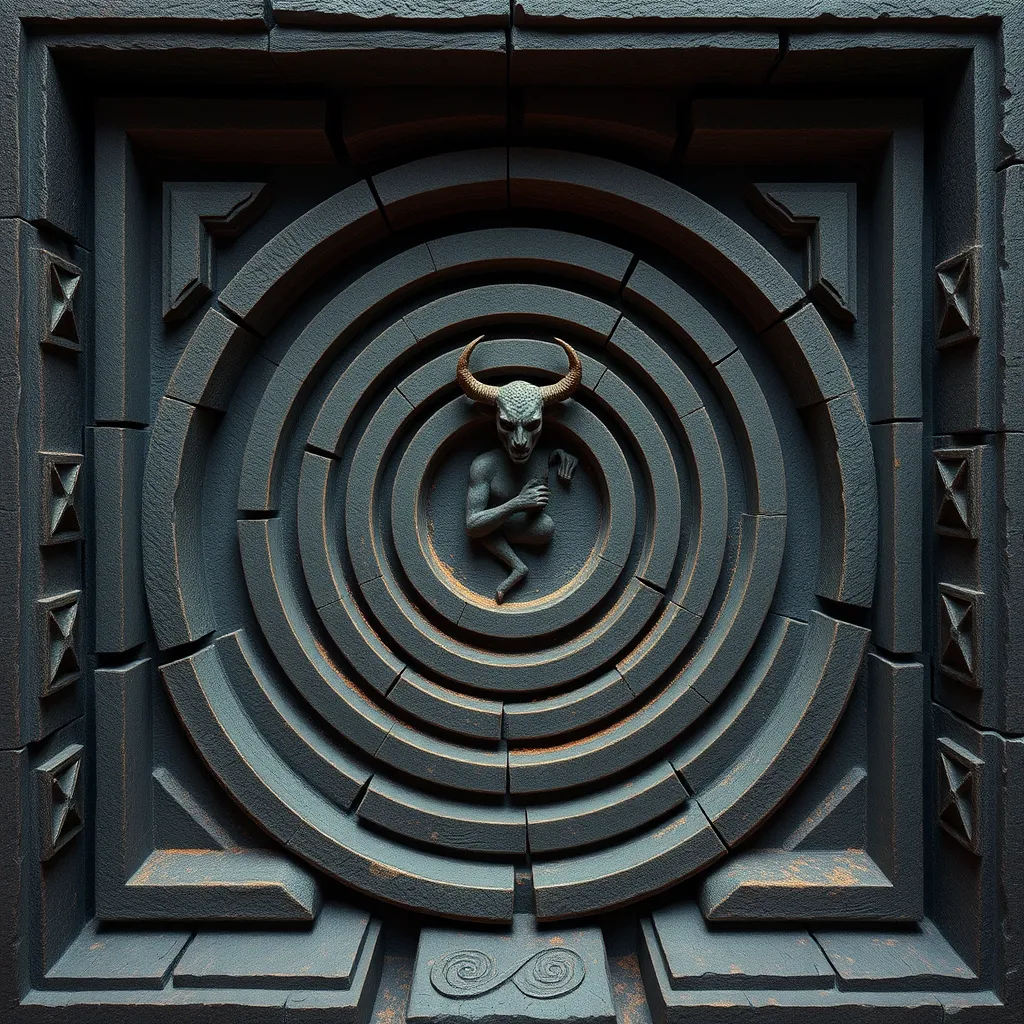The Rakshasa in Cambodian Mythology: The Shadowy Guardians of Angkor Wat
Introduction to Rakshasa in Cambodian Mythology
The Rakshasa, a term that evokes intrigue and fear, represents a class of supernatural beings deeply rooted in Asian folklore, particularly within Hindu and Buddhist traditions. In Cambodian mythology, these entities are often portrayed as formidable figures, embodying both protective and malevolent traits. They serve as a bridge between the spiritual and the earthly realms, influencing the cultural landscape of Cambodia significantly.
In the context of Cambodian culture, Rakshasa are not merely mythical beings; they are emblematic of the complex interplay between good and evil, reflecting the duality present in human nature. Their presence can be felt throughout the storied history of Cambodia, especially in the grandeur of Angkor Wat, where their legacy is intricately woven into the fabric of its architecture and spiritual significance.
Historical Context of Angkor Wat
Angkor Wat, one of the largest religious monuments in the world, was constructed in the early 12th century during the reign of King Suryavarman II. Originally built as a Hindu temple dedicated to the god Vishnu, it later transitioned into a Buddhist site, reflecting the dynamic nature of Cambodian spirituality over the centuries.
The temple complex is not only an architectural marvel but also a symbol of Khmer ingenuity and cultural identity. It served as the center of the Khmer Empire, which was one of the most powerful empires in Southeast Asia. Angkor Wat’s significance extends beyond its physical presence; it is a representation of the Khmer people’s beliefs, artistry, and their quest for spiritual enlightenment.
Symbolism of Rakshasa in Hindu and Buddhist Traditions
In both Hindu and Buddhist traditions, Rakshasa are depicted with contrasting characteristics. In Hinduism, they are often portrayed as demonic beings that oppose the gods, embodying chaos and disorder. However, they can also serve as protectors of sacred spaces, showcasing their complex nature.
Conversely, in Buddhism, Rakshasa are depicted more as guardians who protect the Dharma, the teachings of the Buddha. This duality is crucial in understanding their role in mythology:
- Protectors: In many narratives, Rakshasa defend sacred sites and uphold cosmic order.
- Malevolent Figures: They are also known for their trickery and malice, often challenging heroes and deities.
This duality highlights the intricate balance between good and evil, a theme that resonates throughout Cambodian folklore and is mirrored in the architectural designs of Angkor Wat.
Rakshasa Depictions in Angkor Wat Architecture
The carvings and sculptures adorning Angkor Wat provide a visual narrative of the Rakshasa. These depictions often illustrate their fierce countenance and dynamic poses, embodying both strength and agility. The artistic style of these sculptures is reflective of the Khmer Empire’s cultural values and beliefs.
Key features of Rakshasa representations in Angkor Wat include:
- Facial Features: Many Rakshasa are depicted with exaggerated facial expressions, representing their fierce nature.
- Dynamic Poses: The sculptures often capture movement, suggesting their active role in both protecting and challenging the divine.
- Symbolic Attributes: Various weapons and adornments signify their status as guardians and warriors.
The intricate carvings serve not only as artistic masterpieces but also as a testament to the beliefs and narratives that shaped Khmer society.
The Role of Rakshasa in Khmer Folklore
In Khmer folklore, Rakshasa are central figures in numerous stories and legends. These tales often convey moral and ethical lessons, teaching the importance of virtue, courage, and wisdom. Common themes include:
- Conflict with Heroes: Many stories depict Rakshasa as adversaries to heroes, symbolizing the struggle between good and evil.
- Transformation: Some narratives explore the possibility of redemption, where Rakshasa can evolve from malevolent beings to protectors.
- Cultural Reflection: These stories reflect societal values, illustrating the complexity of human nature and the battles individuals face within themselves.
Through these tales, the Rakshasa remain relevant, serving as a reminder of the duality present in all beings.
Rakshasa as Guardians of the Temple
At Angkor Wat, Rakshasa are often viewed as guardians, protecting the temple and its spiritual significance. This protective role is deeply embedded in local beliefs and rituals. The Khmer people traditionally view these beings as intermediaries between the divine and the earthly realms, safeguarding the temple from malevolent forces.
Rituals surrounding the worship of Rakshasa may include:
- Offerings: Food and flowers are often offered to appease and honor these guardians.
- Prayers: Devotees may recite prayers asking for protection and guidance from the Rakshasa.
- Ceremonies: Special ceremonies might be held to ensure harmony within the temple and among its visitors.
The belief in Rakshasa as guardians emphasizes the importance of spiritual protection in Khmer culture and the enduring legacy of these mythological figures.
Modern Interpretations and Cultural Significance
In contemporary Cambodian culture, the Rakshasa continue to hold a place of significance. They are often depicted in various forms of art, literature, and performance, reflecting their enduring influence on Cambodian identity.
The modern interpretation of Rakshasa includes:
- Art: Artists often draw inspiration from Rakshasa for paintings and sculptures, bringing ancient myths to life.
- Literature: Folktales featuring Rakshasa are retold, keeping the stories alive for new generations.
- Tourism: As a part of Angkor Wat’s allure, the Rakshasa attract tourists interested in the rich mythology surrounding the temple.
This ongoing cultural significance highlights the Rakshasa’s role as a symbol of resilience and strength in Cambodian heritage.
Conclusion: The Enduring Legacy of Rakshasa in Cambodian Mythology
The Rakshasa, with their multifaceted nature, remain an integral part of Cambodian mythology and culture. Their representation at Angkor Wat not only showcases the artistic prowess of the Khmer Empire but also reflects the deep-seated beliefs and values of the Cambodian people.
As guardians of the temple, they symbolize the ever-present struggle between good and evil, serving as a reminder of the complexities of human nature. The enduring legacy of Rakshasa continues to resonate in contemporary Cambodian society, highlighting their significance in the cultural identity of the nation. Through art, folklore, and spiritual practices, the Rakshasa remain vital figures, ensuring that their stories are told and retold for generations to come.



